As our loved ones age, there may be a point where they need professional care. That’s entirely natural, and it’s easy to feel overwhelmed when looking at your options. Assisted living is one of those solutions—it offers a community-centered lifestyle that helps with daily routines, all while respecting a resident’s freedom.
Assisted living is designed for adults who want to live independently but benefit from help with tasks like grooming, mobility, or managing medications. If your loved one values their independence but wants some support with the tasks giving them trouble, it’s likely time to think about assisted living.
Who Benefits Most from Assisted Living?
People who benefit most from assisted living often share a few key traits. While every person’s needs are different, most residents are looking for a true community. Assisted living should be a way to stay active and independent, all while receiving help for everyday needs.
Ideally, a person in assisted living:
- Is capable of living independently, but needs reminders or support for daily tasks like medication management
- Needs help with personal care, such as dressing, bathing, or grooming
- May experience challenges that limit mobility and may be using a walker or wheelchair
- Wants more social interaction or opportunities for community activities
- Prefers a home-like environment with services like housekeeping and meals
Factors That Determine Eligibility for Assisted Living
Several elements help determine whether assisted living is a good fit. Each individual’s situation is unique, but a few core areas are commonly reviewed. These include age, health, mobility, and the support needs a person has day to day.
Age Guidelines
Most people in senior living communities are over 65, but that’s not a firm rule. Younger adults with conditions that require supportive, non-medical care may also qualify. Age is not a strict requirement—eligibility is based more on the level of support needed than on a specific number.
Health & Mobility Levels
Assisted living works well for those who need help with basic, non-medical care. Residents might need help with bathing, meals, or laundry, but they can still move around their space, with or without mobility aids. Walkers and wheelchairs are often welcome, though this may change depending on the specific community.
However, those who are mostly bedridden or need continuous medical attention may benefit more from skilled nursing care.
Daily Support Needs
Most residents need some type of help with daily tasks. That might include reminders to take medications, help with dressing, or support getting in and out of a chair. What matters is whether the person can still function safely without full-time medical supervision. Assisted living is a way to balance professional help with independence.
Steps to Qualify for Assisted Living
Before someone moves into assisted living, there’s a process to assess whether the environment will meet their needs. These steps include a review of health, history, and financial planning.
Health Assessment
Most communities start with a physical health evaluation. This helps the community understand the person’s mobility, strength, and any chronic conditions that may require support.
These assessments help create a plan for personal care that fits your loved one’s lifestyle and goals. Even after move-in, periodic check-ins are done to keep care personalized.
Medical History Review
A care team will likely review past diagnoses and current medications. Knowing about allergies, dietary restrictions, or chronic illnesses helps caregivers provide safe daily support too. This step is important for long-term wellness planning.
Cost & Payment Considerations
The cost of senior care varies depending on location and services included. Many residents use savings, insurance, or veterans’ benefits. Medicaid may also help offset costs, though this depends on several underlying factors.
Before move-in, families often meet with a representative to go over pricing, services, and what’s included in each package. Planning ahead supports a smoother transition.

Preparing for the Move to Assisted Living
Moving into assisted living is a big step, but it doesn’t need to be overwhelming. Preparing ahead of time can help ease the transition.
Here are a few things families can do to prepare for the move:
- Visit different communities to find the right fit
- Ask questions during tours about services, routines, and activities
- Talk openly as a family about care goals and support preferences
- Prepare medical records, medications, and important documents
- Help your loved one downsize personal items gradually
- Schedule the move-in for a calm, unrushed day
A little planning goes a long way. Touring communities and speaking with staff can help everyone feel more confident about the decision.
Know When It’s Time to Make the Move
Assisted living can be an excellent option for those in need. If your loved one values their independence but could benefit from some daily help, the move to assisted living can make a big difference. It’s a chance to get them the help they need every day to preserve their quality of life.
With the right mix of care and community, your loved one can enjoy more freedom, connection, and peace of mind. To learn more, reach out to our team at Valley View Senior Living! Learning more about assisted living is the first key towards making the transition, so book a tour with our community today.


